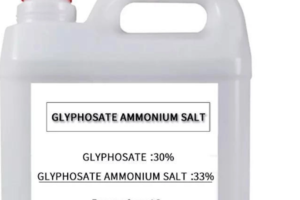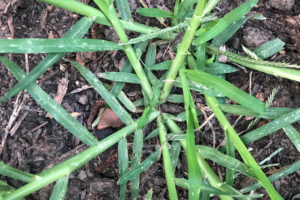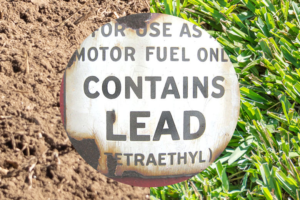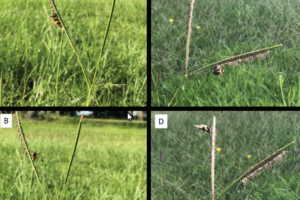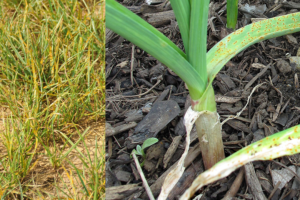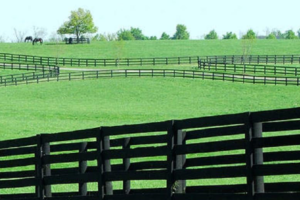
Introduction
Study on Soil Microbiomes in Lawns and Their Connection to Land-Use Legacy
The study of soil microbiomes in lawns is a fascinating and vital field of research that has significant implications for our understanding of urban landscapes and their environmental impact. This research focuses on the complex interplay between soil microbiomes, the tiny organisms that inhabit the soil, and the legacy of land use, which refers to the historical ways the land has been used and managed.
The soil microbiome is a complex ecosystem teeming with bacteria, fungi, and other microorganisms that play a crucial role in soil health and function. Various factors influence these microbiomes, including the type of vegetation present, climate, and human activities. On the other hand, the legacy of land use refers to the historical ways the land has been used and managed. This can include agricultural practices, forestry, urban development, and more. The legacy of land use can have long-lasting effects on the soil and its microbiome, influencing its composition and function for years or even decades.
Understanding Land-Use Change and Its Effects on the Environment
Understanding land-use change and its environmental effects is crucial for many reasons. Land-use change is a primary driver of global environmental change, significantly impacting biodiversity, climate, and human societies. As we alter our landscapes – whether through deforestation, urbanization, or agriculture – we also alter the ecosystems that inhabit them, including the soil microbiomes.
These changes can have profound effects on the environment. For example, changes in soil microbiomes can affect soil fertility, plant growth, and the cycling of nutrients and carbon, influencing climate change. Furthermore, as our cities and towns continue to grow and expand, understanding the effects of urban development on soil microbiomes and land-use legacy becomes increasingly essential. This knowledge can help us manage our landscapes more sustainably, mitigating the negative impacts of land-use change and preserving the health of our soils for future generations.
Understanding Land-Use Change
Explanation of Land-Use Change as a Dominant Component of Global Environmental Change
Land-use change might sound complex, but it’s pretty straightforward. It simply refers to how humans use and change the land around us. This could be anything from building a new city, cutting down a forest to make way for farmland, or restoring a previously drained wetland.
These changes are happening worldwide and are a big part of driving changes in our global environment. When we change how we use the land, we also change the habitats and ecosystems. This can significantly impact the plants, animals, and even the tiny microbes in these places.
Effects of Land-Use Legacies on Contemporary Environmental Performance
Now, when we talk about ‘land-use legacies,’ we’re talking about the lasting effects of these land-use changes. For example, if a forest is cut down to make way for a city, the effects of that change can still be seen in the soil and the local environment many years later. This is the ‘legacy’ of that change in land use.
These legacies can significantly impact how well our environment can function and provide us with what we need, like clean air, water, and soil to grow our food. For instance, if a piece of land has been heavily polluted, it might not be able to support healthy plant life, even many years after the pollution has stopped. Understanding these land-use legacies is essential to care for our environment and ensuring it can support us and the many other species we share on the planet.
The Role of Urban Grasslands
Description of Urban Grasslands, Their Formation, and Their Ecological Features
When we think of cities, we often picture buildings, roads, and other man-made structures. But have you ever thought about the grassy areas in cities? These are what we call ‘urban grasslands.’ Our urban landscape includes parks, lawns, sports fields, and other grassy areas.
Urban grasslands are created when we build our cities and towns. As we construct buildings and roads, we also set aside areas for green spaces. These spaces are often covered in grass, creating urban grasslands. These grasslands are essential because they provide a bit of nature in our cities, offering places for people to relax, play, and connect with the natural world.
Discussion on the Effects of Urban Development on Soil Physiochemical Conditions and Biodiversity
What does all this urban development mean for the soil and its tiny creatures? When we build on a piece of land, we change the soil in many ways. We might compact it, add fertilizers or other chemicals, or change its structure by adding or removing soil. These changes can affect the physical and chemical conditions of the soil, which in turn can affect the creatures living in it.
For example, compacted soil might be more challenging for plant roots to penetrate, making it harder for plants to grow. Changes in soil chemistry can affect the types of microbes living in the soil. This can change the biodiversity, or variety of life, in the soil. And since these microbes play essential roles in the soil, like breaking down dead plants and animals and recycling nutrients, changes in soil biodiversity can significantly affect the health and functioning of the soil. Understanding these effects is essential for managing our urban grasslands in a way that supports healthy soil and a diverse range of life.
The Concept of Urban Ecological Homogenization
Explanation of Urban Ecological Homogenization and Its Implications
Let’s talk about a concept called ‘urban ecological homogenization.’ That’s a mouthful, but don’t worry; it’s not as complicated as it sounds. ‘Homogenization’ means making things the same or similar. So, ‘urban ecological homogenization’ is about how cities can make different places look and feel the same, ecologically speaking.
Imagine you’re traveling and you visit two different cities, one on the coast and one in the mountains. Despite these cities being in very different locations, you might notice that their parks and lawns look similar – they have the same grass, trees, and flowers. This is an example of urban ecological homogenization. Even though these cities are in different environments, their green spaces are similar.
How Urbanization Processes Influence Soil Microbial Community Dynamics
What does all this have to do with the tiny microbes in the soil? When we make different places look and feel the same, we can also make the soil and its microbes similar. For example, if we plant the same type of grass in different cities, the soil in those parks might become more similar over time. This is because the grass affects the soil, and the soil affects the microbes living in it.
This can significantly affect the ‘microbial community dynamics’ or the way the different microbes in the soil interact with each other. For example, if the soil becomes more similar in different places, the microbial communities might also become more similar. This could mean less variety in the types of microbes and the roles they play in the soil. And since these microbes are essential for things like soil health and nutrient cycling, this could have significant implications for our urban grasslands and the services they provide.
The Study: Soil Microbiomes in Lawns Reveal Land-Use Legacy Impacts
Overview of the Study Conducted on Soil Microbiomes in Lawns
Let’s dive into a fascinating study examining soil microbiomes in lawns. Remember, a microbiome is like a tiny world of microbes living in the soil. This study wanted to see how the history of how we’ve used the land (the land-use legacy) affects these tiny worlds.
In this study, scientists took soil samples from different lawns in cities. They then used special techniques to determine what microbes lived in the soil. By comparing the microbes in different lawns, they could see if the land’s history affected the soil microbiomes.
The Methodology and Findings of the Study
The scientists in this study made some exciting discoveries. They found that the history of the land did indeed affect the soil microbiomes. For example, lawns built on land that used to be farmland had different microbes than those built on land that used to be forests.
This is a big deal because it shows that the history of how we’ve used the land can leave a lasting legacy in the soil. Even though these places are now lawns in cities, the soil still carries a memory of what the land used to be. This memory can affect the types of microbes in the soil, which in turn can affect the health and functioning of the soil. This is essential information for us to know as we build and manage our cities.
Implications of the Study
Implications of the Study’s Findings on Understanding Urban Ecological Homogenization
The findings of this study have some exciting implications, especially when we think about urban ecological homogenization. Remember, that’s the idea that cities can make different places look and feel the same. This study shows that even though our lawns might look similar on the surface, the soil underneath can tell a different story.
The fact that the history of the land can leave a lasting legacy in the soil means that our urban landscapes might not be as homogenized as we thought. Even in the heart of a city, the soil can carry a memory of the land’s past, whether it was a forest, a farm, or something else. This adds a whole new layer of complexity to our understanding of urban environments and how they function.
The Potential Impacts of These Findings on Urban Planning and Environmental Conservation Efforts
These findings also have important implications for planning and managing our cities. If the history of the land can affect the soil and its microbes, then we need to consider this when making decisions about how to use and care for our urban landscapes.
For example, if a piece of land used to be a farm, we might need to manage the soil in a certain way to support healthy microbial communities. Or if we’re planning a new development, consider the land’s history and how it could affect the soil in the future.
These insights could also be helpful for environmental conservation efforts. By understanding the land’s history and its effects on the soil, we can better protect and restore our urban grasslands, supporting a diverse range of life and maintaining the many benefits these spaces provide.
Conclusion
Recap of the Key Points Discussed in the Article
Let’s wrap things up by revisiting some key points we’ve discussed. We’ve learned that the tiny world of microbes living in the soil of our urban lawns can tell us a lot about the history of the land. Even though our cities might make different places look and feel the same, the soil underneath our lawns carries a memory of the land’s past.
This memory can affect the types of microbes in the soil and how they interact with each other. And since these microbes play essential roles in the soil, like supporting plant growth and recycling nutrients, this can significantly affect our lawns’ health and functioning.
Further Research and Awareness on the Impact of Land-Use Change on Urban Landscapes
The findings of this study open up a whole new way of looking at our urban landscapes. But there’s still a lot we still need to learn. We need more research to fully understand the effects of land-use change on soil microbiomes and how this can affect our urban environments.
At the same time, we also need to raise awareness about these issues. The next time you’re walking through a park or sitting on a lawn, consider the soil beneath you. It’s not just dirt – a living, breathing ecosystem that carries a memory of the land’s past. By understanding and appreciating this, we can make better decisions about using and caring for our land, creating healthier, more sustainable cities for us all to enjoy.
Thompson, Grant & Bray, Natalie & Groffman, Peter & Kao-Kniffin, Jenny. (2023). Soil microbiomes in lawns reveal land-use legacy impacts on urban landscapes. Oecologia. 202. 10.1007/s00442-023-05389-8.

Bob Green, a passionate lawn care enthusiast with over two decades of landscaping experience, is this website’s proud owner. His vast knowledge of horticulture and dedication to helping homeowners maintain beautiful lawns are reflected in the valuable content he shares on his platform. John has always been interested in Agrostology.









